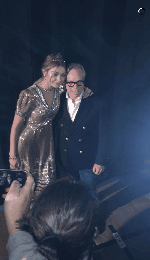Digital marketing and technology have made both London and New York Fashion Week the most inclusive and accessible yet, breaking down boundaries between high street style hunters, the fashion elite and VIPs. Burberry are leading the charge as usual and connecting with millennial movements by announcing genderless collections and reacting to the insta-consumer.
Witness their Snapchat storytelling, which gives life to Burberry and LFW as a whole via its own geofilters, allowing a global audience to tap in to live catwalk action and rolling out a storytelling campaign.

But other fashion houses are stepping up and making waves in the digital world too…
Tommy Hilfiger’s use of Apple Watch to allow those who snapped up wearable tech to queue jump to the runway show.

Ralph Lauren and Topshop live-showcasing collections via Periscope in collaboration with GoPro and Nick Knight.


Tommy Hilfiger using influential instagrammers to curate and post live footage to their hearts’ content from the “InstaPit”, as well as engaging Snapchat users through Gigi Hadid’s takeover of the brand’s channel. With 13 million personal followers, her influence will have directed a new audience toward the brand in one snappy swoop.

Temperley’s use of Vero for social shopping, where user’s engagement determined how much of the AW16 collection they could unlock.

Of course, Twitter has been used by many brands to generate global engagement but 140 characters are not enough. Research from Greenlight Digital proves that visual content is key, shaping the way for Fashion, with only 1718 twitter mentions using #LFW2016 compared with over 6000 using #LFW2015.
The power of bloggers and social media influencers, combined with the ability to capture and generate key data analytics to further understand those tapped in global consumers, show that although exclusivity still plays a role in luxury brand marketing via tech, it’s now all about instant access where content is king and favours the bold, resulting in a real shake up of the purchasing path.
Brands are realising that exclusivity of shows, delays between showcase and collection drops as well as the mystique behind Fashion Week are no longer necessary. Responding to the on-demand “Deliveroo” consumer culture is essential because the millennial consumer expects what they want, when they see it.
Come September, Fashion will continue to take the shape defined by the demands of tech-savvy consumers and immersive retail experiences. Burberry will shift its Fashion Week calendar to showcase in-season apparel, enabling immediate purchase straight from the catwalk – with Tommy Hilfiger, Tom Ford and smaller brands including Minkoff following digital suit.
So is the reign of Content bringing an end to Fashion’s traditions – VIP access, glossy print campaigns and bricks & mortar retail outlets?

With Apple TV’s real-time purchase system – pre-ordering straight off the runway, interactive content such as shoppable video, the rise of the super bloggers and instagrammers alongside the ever-growing impact of user-generated content, we expect the runway to act as an instant catalogue and for users to gain some serious say in brand activity. Vive la révolution?
 +44(0)2035761294
+44(0)2035761294  info@culte.co.uk
info@culte.co.uk

